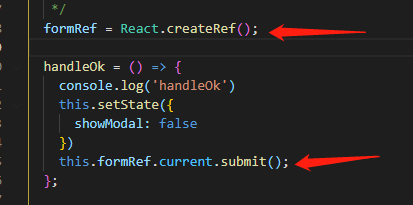可以将文章内容翻译成中文,广告屏蔽插件可能会导致该功能失效(如失效,请关闭广告屏蔽插件后再试):
问题:
Is it possible to get python to generate a simple sound like a sine wave?
Is there a module available for this? If not, how would you go about creating your own?
Also, would you need some kind of host environment for python to run in in order to play sound, or can it be achieved just from making calls from the terminal?
If the answer is OS-dependent, I'm using a mac.
回答1:
I was looking for the same thing, In the end, I wrote this code which is working fine.
import math #import needed modules
import pyaudio #sudo apt-get install python-pyaudio
PyAudio = pyaudio.PyAudio #initialize pyaudio
#See https://en.wikipedia.org/wiki/Bit_rate#Audio
BITRATE = 16000 #number of frames per second/frameset.
FREQUENCY = 500 #Hz, waves per second, 261.63=C4-note.
LENGTH = 1 #seconds to play sound
if FREQUENCY > BITRATE:
BITRATE = FREQUENCY+100
NUMBEROFFRAMES = int(BITRATE * LENGTH)
RESTFRAMES = NUMBEROFFRAMES % BITRATE
WAVEDATA = ''
#generating wawes
for x in xrange(NUMBEROFFRAMES):
WAVEDATA = WAVEDATA+chr(int(math.sin(x/((BITRATE/FREQUENCY)/math.pi))*127+128))
for x in xrange(RESTFRAMES):
WAVEDATA = WAVEDATA+chr(128)
p = PyAudio()
stream = p.open(format = p.get_format_from_width(1),
channels = 1,
rate = BITRATE,
output = True)
stream.write(WAVEDATA)
stream.stop_stream()
stream.close()
p.terminate()
回答2:
I know I'm a little late to the game on this one, but this is a pretty fantastic python project for synthesis and audio composition: https://github.com/hecanjog/pippi
It's still actively being developed, but it's been going for a while.
回答3:
The Python In Music wiki page has not been terribly well-kept-up, but it's a good starting point.
http://wiki.python.org/moin/PythonInMusic
回答4:
After wasting time on some uncompilable or non-existent projects, I discovered the python module wavebender, which offers generation of single or multiple channels of sine, square and combined waves. The results can be written either to a wavefile or to sys.stdout, from where they can be interpreted directly by aplay in real-time. Some useful examples are explained here, and are included at the project's github page.
回答5:
I like PyAudiere , which lets you play numpy arrays as sounds... I guess it jives well with my Matlab background. I believe it's cross-platform. I think scikits.audiolab does the same thing, and may be more current / better supported... seems easier to me than trying to save things as wavfiles or write them to buffers and use Python's builtin sound library.
回答6:
I am working on a powerful synthesizer in python. I used custom functions to write directly to a .wav file. There are built in functions that can be used for this purpose. You will need to modify the .wav header to reflect the sample rate, bits per sample, number of channels, and duration of synthesis.
Here is an early version of a sin wave generator that outputs a list of values that after applying bytearray becomes suitable for writing to the data parameter of a wave file. [edit] A conversion function will need to transform the list into little endian hex values before applying the bytearray. See the WAVE PCM soundfile format link below for details on the .wav specification.[/edit]
def sin_basic(freq, time=1, amp=1, phase=0, samplerate=44100, bitspersample=16):
bytelist = []
import math
TwoPiDivSamplerate = 2*math.pi/samplerate
increment = TwoPiDivSamplerate * freq
incadd = phase*increment
for i in range(int(samplerate*time)):
if incadd > (2**(bitspersample - 1) - 1):
incadd = (2**(bitspersample - 1) - 1) - (incadd - (2**(bitspersample - 1) - 1))
elif incadd < -(2**(bitspersample - 1) - 1):
incadd = -(2**(bitspersample - 1) - 1) + (-(2**(bitspersample - 1) - 1) - incadd)
bytelist.append(int(round(amp*(2**(bitspersample - 1) - 1)*math.sin(incadd))))
incadd += increment
return bytelist
A newer version can use waveforms to modulate the frequency, amplitude, and phase of the waveform parameters. The data format makes it trivial to blend and concatenate waves together. If this seems up your alley, check out WAVE PCM soundfile format.
回答7:
I found these two python repositories very useful, might wanna have a look at it...
python https://github.com/JeremyCCHsu/Python-Wrapper-for-World-Vocoder
ipython : https://timsainb.github.io/spectrograms-mfccs-and-inversion-in-python.html
[EDIT] As pointed out, here is an explanational of the two links
python one seems to have an error, but many people were able to make it run, so I'm not sure. ipython worked like a charm, so I hope you can run it.
Both of the links are supposed to take an audio as an input, preferably .wav file. Featurize it ( USE FFT : 512, step size = 512/8 ) to obtain spectrograms ( you can even visualize it ), it's a 2D matrix, and then train your Machine learning objects or do whatever you want using a matrix that represents the original audio. If you want, at anypoint, what those vectors represent you can resynthesize audio back as well.





